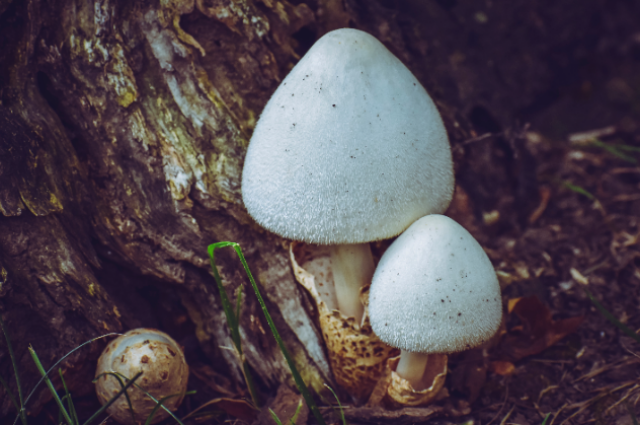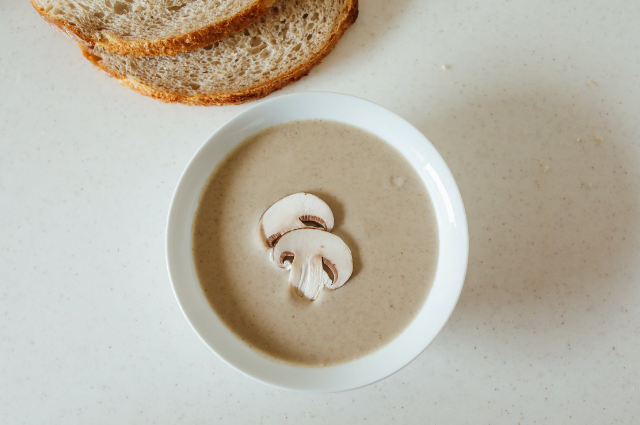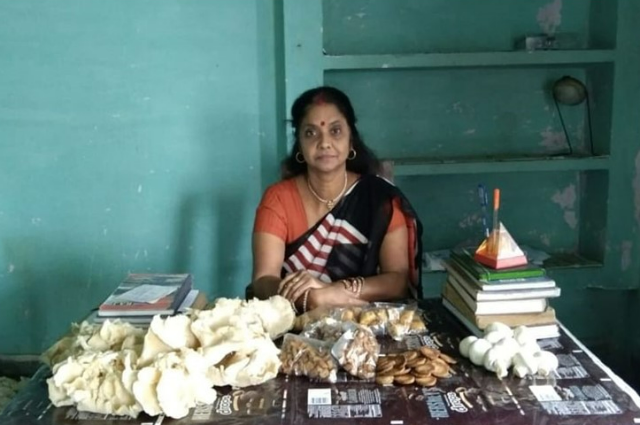There are more than 3 lakh species of plants. But as we start speaking of mushrooms, they seem to fall under a different higher classification level. Fungi were once considered plants but are now classified as a separate kingdom. This kingdom includes not only the familiar mushrooms, puffballs, and stinkhorns, but also yeasts, smuts, rusts, and lichens. Most fungi are multicellular, consisting of a mass of thread-like hyphae that together form a mycelium. However, the simpler fungi(e.g., yeasts) are microscopic, single-celled organisms. Typically, fungi reproduce by means of spores. Most fungi feed on dead or decaying matter or living organisms. A few fungi obtain their food from plants or algae, with which they have a symbiotic (mutually advantageous) relationship.
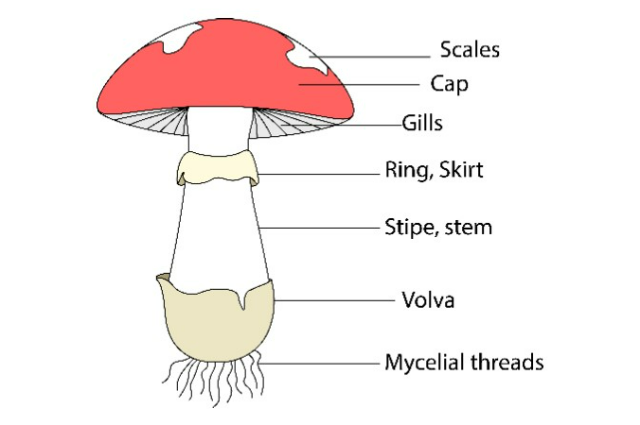
Anatomy of mushroom, psychedelicreview
The mycelium network:
In the digital era, we are all connected by the means of servers, computers, and devices. The internet as we know it today is an invisible web of these communication devices that keeps us all connected. But mother nature already has her own kind of internet weaved well below our feet.

While trees and plants might seem remote and reclusive organisms, they are very much capable of communicating with each other owing to their symbiotic relationship with fungi. The soil fungi, mycorrhizae grow a network of small branching thread-like entities called a mycelium that expands through the soil, reaching even to the proximities of the roots of trees. And these enable the fungi to absorb nutrients from the soil like nitrogen and phosphorus, which plants usually find in smaller quantities locally and are tough to acquire. This harmonious trade between the both enables the fungi to receive carbon in the form of sugars and plants receive the nutrients.
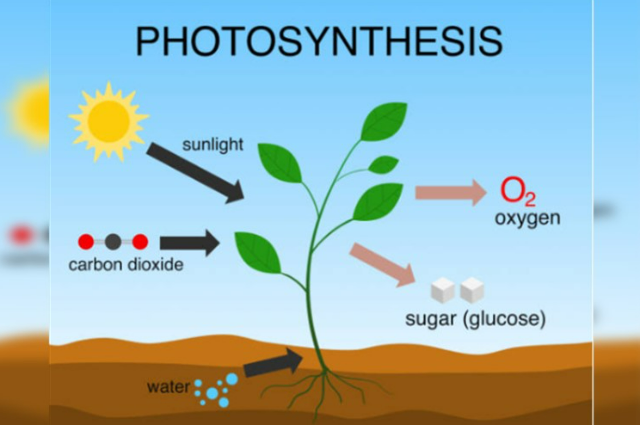
Ecologist Suzanne Simard concluded they weren't merely sharing nutrients with fungi, but also with each other. To test her hypothesis, Suzanne and her colleagues infused the trees with a traceable radioactive carbon. The radioactive carbon was found in the neighboring trees, too. They also found that the nutrients were distributed more where they were needed the most. Since the trees under shade produce less energy via photosynthesis than their sunbathing counterparts, these require energy the most, and it was rightfully found that these did get their rightful share of nutrients.
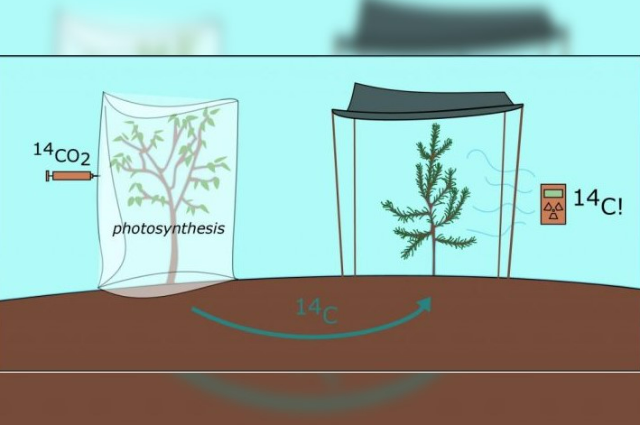
Continued research into these underground networks, called common mycelium networks(CMN), has revealed that plants are not only able to gain access to more nutrients but they can also engage in "sophisticated" communication by talking chemically through mycelia. Now, why is this vast and innately intellectual network so important? Well because it is one of the best arguments to preserve old-growth forests.
- Preserving the highly connected mother trees from deforestation ensures mycorrhizal fungal diversity, and helps forest regrowth happen more quickly.
- Yet another advantage of CMN is that plants and trees grown in these networks can warn each other of pests using these chemically activated "electrical signals", and can reduce the usage of pesticides.
Mycoremediation:
During the stint of Netflix's streamfest, I stumbled upon this great documentary called, Fantastic Fungi. And it got me hooked to the topic and led me to find Paul Stamets. Stamets is an American mycologist and an entrepreneur and has appeared in talks and advocates for hailing the Kingdom Fungi.
Mycoremediation is a term formulated by Paul Stamets in 2005 that refers to the technique of using fungi mycelia to break down and eliminate a wide assortment of hydrocarbon-based toxic substances from the environment and transform them into harmless, environmental-friendly by-products.
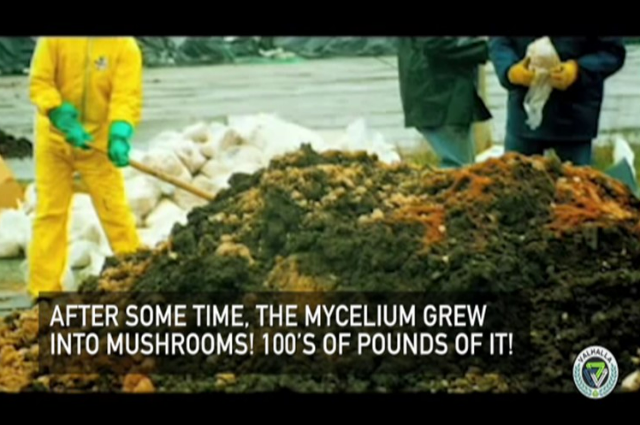
Mycoremediation in action, www.youtube.com
This is from where it was evident that mushrooms can do more than just nurture, regrowth, and support. Oil spills can disturb the ecosystem of the environment and since oil has a wide variety of toxic substances including carcinogens(a substance capable of causing cancer in living tissue, according to Google), it becomes even more crucial to address this issue. Various species of mushrooms can clean up after the toxic pollutants released during oil spills and turn them into less harmful substances.
Now, what exactly does clean up here mean?
It essentially means the fungi's ability to digest or break down complex organic compounds like PAHs(polycyclic aromatic hydrocarbons) into simpler substances that are not as detrimental to the environment as the former is.
Additionally, it was also found that worms die when put into contact with high concentrations of complex hydrocarbon-saturated soils, but thrive after mycelial treatments bringing down the level of toxic substances below the fatal thresholds.
Other health benefits and economic usages:
Mushrooms have been rising rapidly to stardom with the crown of "superfood" on their caps, quite literally. With almost inconsiderable amount of calories and high in micronutrients and selenium(Selenium has been known to act as a powerful antioxidant. Antioxidants are compounds in foods that prevent cell damage caused by free radicals), they bestow upon us the goodness of nature. They are also quick to prepare and versatile as they can be baked, roasted, stir-fried, or even turned into a beautiful mushroom soup/sauce.
A website shares positive stories and tries to make a genuine impact has lots to share about people who started with very less capital and turned their mushroom business profitable. Such is the story of homemaker Rekha Kumari who started with just Rs. 1,000, the business originating from her room. The nascent mushroom cultivation soon caught pace after she took training from Krishi Vigyan Kendra in Sipaya and Rajendra Prasad Central Agricultural University Pusa in Samastipur. Since then she has been able to grow about 6 varieties of mushrooms and prepare a range of delicacies from them
Easy to start with and requiring very minimal expenditure, cultivating mushrooms can provide an impetus for unemployed women looking to expand their wings and earn some of their own fortunes by themselves.
Rekha Kumari and her home-growm mushrooms, the-better-india
We once again shift our focus to mother nature and dive into packaging. The packaging industry is hugely dominated by styrofoam. Styrofoam contains polystyrene which is a synthetic polymer and can take anything between 500 to 1 million years to decompose. And something which takes so long to decompose is not biodegradable.
According to ACSPublications, globally, only 18% of plastic waste is recycled, and 24% is incinerated. The remaining 58% are either landfilled or enter the natural environment, where plastics accumulate and persist for a long period.
Non-biodegradable substances fill up our landfills and also mostly leach harmful chemicals into our soil which then contaminates our water table and eventually our source of living. Mycelium comes to our rescue even here. Mycelium is a completely green and sustainable material that is lightweight, durable, and cheap to produce making it an increasingly appealing and cost-competitive alternative option to styrofoam.
Ecovative design, a company based in New York is producing two products that can be used especially for products that require additional protection during shipping. The furniture company Ikea and computer company Dell has already tied up with Ecovative design to use their material for packaging their furniture and computers respectively. Mycelium-based packaging can be easily thrown to decompose, which is the best part.
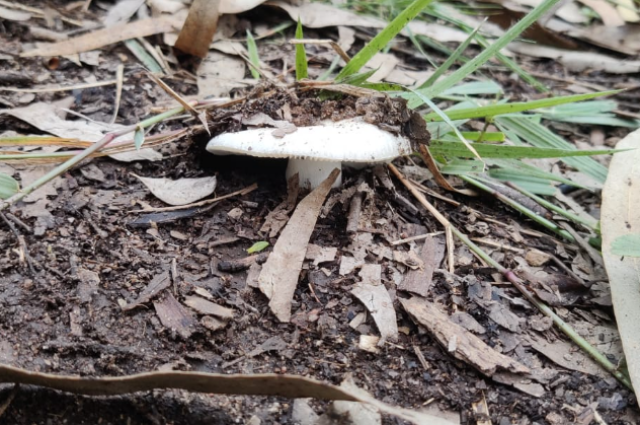
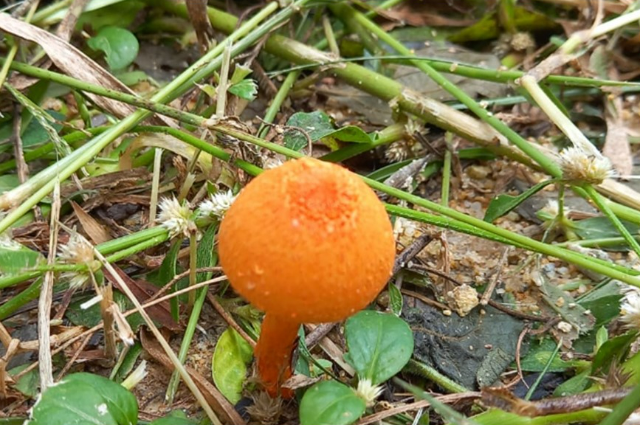
The mycelia and its fruiting body that we enjoy for its nutritional benefits, taste, and texture, together revive the earth in incredible ways. Knowing their benefits in wide angles of our lives should encourage us more to get close to the Kingdom that we call, Fungi.

